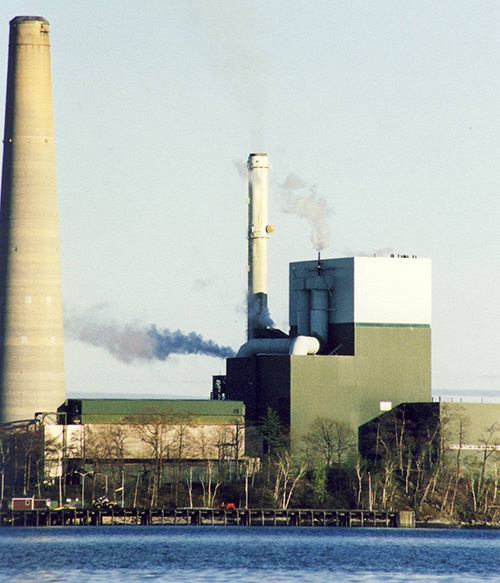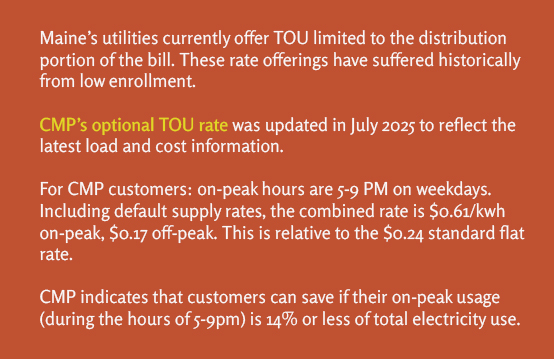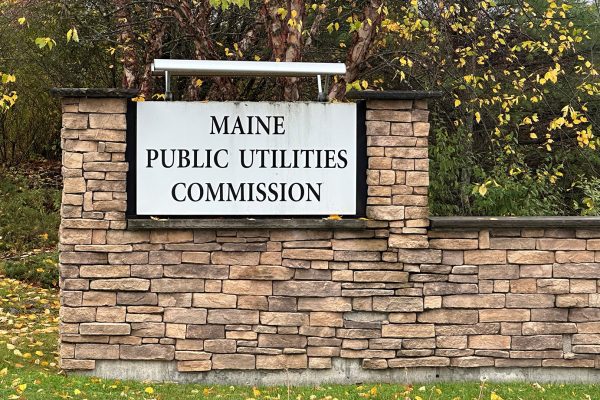Climate change is impacting us all. So are rising electricity costs.
The high price of fossil fuels and paying to recover from storms worsened by climate change are the top two reasons electricity prices are rising for Maine families and businesses.
We know that renewable energy can address both of these problems, by reducing greenhouse gas emissions and freeing us from our dependence on expensive oil and gas. But rollbacks of federal clean energy policies mean we need to look for areas where Maine can make real progress now to bring down electricity prices and curb climate pollution.
One of the most promising solutions is Time-of-Use (TOU) electricity rates, which encourage electricity use when the grid is less busy, empowering customers to save while putting downward pressuring on rates over the long-term and keeping expensive fossil-fuel power plants offline.
Here’s how it works.
Time-of-Use Rates Reflect Actual Costs
 Demand for electricity fluctuates over the course of the day and seasons of the year-and so does cost. The most expensive times are typically when consumer demand is high; it’s basic economics at work.
Demand for electricity fluctuates over the course of the day and seasons of the year-and so does cost. The most expensive times are typically when consumer demand is high; it’s basic economics at work.
As an example, this summer during hot afternoons when people across New England were using air conditioning, wholesale electricity prices exceeded $1,000/MWh, more than 2,000% higher than average prices.
But these actual costs are hidden from consumers by the antiquated practice of averaging prices across all hours of the day and year. This approach unfairly shifts costs to those causing the least impact on our shared electricity grid.
Now that advanced digital meters have been installed on nearly all homes and small businesses across the state in both Versant and CMP territories, there’s no excuse for continuing the expensive practice of averaging prices across all hours of the day.
Instead, TOU rates are lower during most of the day but rise during peak periods. By offering Maine people and businesses the opportunity to shift electricity use away from the times when demand is the highest, we can save real money for consumers and lower the costs of our electricity system as a whole.
Time-Of-Use Rates Save Money in Three Ways
1. TOU rates reduce strain on our regional transmission system.
Our grid-all the poles, wires, and substations that we pay for through our electricity bills-is sized to match the maximum demand for electricity, even if that peak period is only a few hours a year. The rest of the time most of our transmission and distribution capacity sits idle or underutilized. Those high-demand times drive the need for additional investments in the grid.
By incentivizing use to off-peak times, we keep expensive infrastructure upgrades at bay and make more efficient use of the capacity we already have.
New England’s grid operator found that reducing peak loads would save roughly $10 billion across the region, with nearly a billion of that going to Maine based on our proportional share of the system.
2. Creating a more flexible grid with solutions like TOU rates can deliver additional savings from our local transmission and distribution systems.
Maine’s Pathways to 2040 study released earlier this year suggested that these Maine-based solutions could reduce local grid growth by 35-55% by 2050, with huge implications for cost savings to Maine ratepayers over the next 25 years.
3. It’s not just the poles and wires that deliver the electricity, but also the electricity supply itself that gets more expensive-and more polluting-as peak demand increases.

Wyman Station, by Beth Comeau
In New England’s electricity market, the least expensive power plants come online first. The last energy source to be fired up to meet demand is the most expensive and sets a uniform price paid to all generators used to meet demand in that period of time. By shifting use away from peak times, we use those expensive resources more rarely, lowering market prices across the board.
As a bonus, the most expensive generators are also the most polluting. By relying less on these outdated coal- and oil-fired power plants through solutions like TOU rates, we reduce climate pollution and improve air quality.
In addition to these savings on the real-time markets, there are enormous savings to be had in avoiding the need to build new generation capacity. Another recent study from the regional grid operator found that if we can shift demand away from evening peak hours-through managed EV charging and baseload appliances like dishwashers and dryers-there’s as much as $30 billion in savings at stake.
TOU Rates Help Households Save Money
Because these rate designs have been around for decades, there is a wealth of data and information about how to do this right and the scale of the benefits at stake for electricity customers.
One rigorous, more recent analysis from a pilot program in Maryland found customers saved 5-10% off their electricity bills on average, reducing summer peaks by 10-14%. This included low- and moderate-income people who responded similarly to higher income households to shift their electricity usage and save money.
TOU Rate Reform Can Bring Innovative Load-Flexibility to Scale
 With the right incentives in place, third-party providers can help deploy and manage technologies like smart thermostats, EV smart chargers, and battery storage in people’s homes at reduced cost to consumers and make it easier for Mainers to shift their electricity use. Small changes to individual residential electricity demand aggregated across many households can provide large benefits to the electrical system.
With the right incentives in place, third-party providers can help deploy and manage technologies like smart thermostats, EV smart chargers, and battery storage in people’s homes at reduced cost to consumers and make it easier for Mainers to shift their electricity use. Small changes to individual residential electricity demand aggregated across many households can provide large benefits to the electrical system.
Sometimes called Virtual Power Plants, or VPPs, these distributed customer-side resources function in aggregate like a power plant-instead of firing up a coal-fired clunker, they can use software and digital controls to dial down small increments of demand across hundreds or thousands of users to balance megawatts of supply and demand.
Bundling distributed resources in this way, VPPs can be managed on a regular basis to avoid daily peaks or can be called on during events like heat waves and extreme winter weather at a fraction of the cost of a conventional polluting power plant. By allowing VPPs to participate in energy planning and markets, we can bring these cost saving opportunities to scale, improving reliability and bringing down rates for all ratepayers.
Our neighbors in Vermont, Rhode Island, and Massachusetts are already benefiting from VPPs, including this past summer when behind-the-meter resources helped prevent blackouts and saved customers millions of dollars during the heat wave that swept New England in late June. Both Maine’s most recent Climate Action Plan and Efficiency Maine Trust’s current strategic plan emphasize the importance of these kinds of load-flexibility strategies for long-term affordability.
Maine’s PUC Has the Opportunity to Pass a Strong TOU Program
Right now, the Maine Public Utilities Commission (PUC) is considering a TOU rate design that will combine the cost of both the electricity delivery and electricity supply peaks to send stronger price signals and offer bigger savings to Maine homes and businesses. The Natural Resources Council of Maine and our partners successfully worked this year to encourage Maine lawmakers to pass a law explicitly authorizing the Commission to do this work.
By pulling the incentives together across the different components of the electricity system-i.e., across transmission, distribution, and supply-we can support the development of a market for demand-side energy management services here in Maine, with big potential benefits.
If we get this right, TOU rates will need to be simple and clear with a higher price in the evening and a lower price at other times of the day, allowing people to save money on their electric bills by using smart thermostats, and doing laundry and running the dishwashers outside a few peak evening hours, for example.
But effective TOU reforms will also stack incentives for regional transmission, distribution, and supply and provide transparent pricing and load information to help jumpstart a market for innovative demand-side management strategies in Maine.
What to Expect from the PUC Process
 Any time changes in electricity rate structures are proposed, people have questions. And to be clear, there are important details to work out. This will not happen overnight. But because TOU has been implemented effectively elsewhere, we have confidence the PUC and stakeholders can address these questions while moving forward and bringing costs savings to bear for Maine electricity customers.
Any time changes in electricity rate structures are proposed, people have questions. And to be clear, there are important details to work out. This will not happen overnight. But because TOU has been implemented effectively elsewhere, we have confidence the PUC and stakeholders can address these questions while moving forward and bringing costs savings to bear for Maine electricity customers.
Effective TOU rates can offer Maine families short-term savings while suppressing rates system-wide over the long term. If we’re serious about addressing affordability while achieving Maine’s climate and clean energy requirements, well-designed TOU rates are a foundational policy and too important an opportunity to pass up.
–Rebecca Schultz, NRCM Senior Advocate, Climate











I grew up in New England, but lived in Belgium for 32 years. In that country, we always used TOU to determine when to turn on various appliances. It saved a lot on our energy bills.